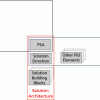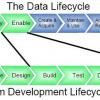Strategic advice to leverage new technologies
Technology is at the heart of nearly every enterprise, enabling new business models and strategies, and serving as the catalyst to industry convergence. Leveraging the right technology can improve business outcomes, providing intelligence and insights that help you make more informed and accurate decisions. From finding patterns in data through data science, to curating relevant insights with data analytics, to the predictive abilities and innumerable applications of AI, to solving challenging business problems with ML, NLP, and knowledge graphs, technology has brought decision-making to a more intelligent level. Keep pace with the technology trends, opportunities, applications, and real-world use cases that will move your organization closer to its transformation and business goals.
Recently Published
Last week, it was in the news that a Pacific Gas & Electric executive admitted to having used an assumed name to infiltrate an online discussion group organized by consumers who are against the deployment of the utility company's smart electricity-usage metering devices. The executive indicated that his goal was simply to get a better understanding of what his company's customers are thinking.
Misleading Measurements
Agile software development involves people working together, across disciplines, to deliver business value efficiently. While the Agile Manifesto states that agile development values "responding to change over following a plan" and "working software over documentation," that does not mean plans are not important. A plan allows you to measure your progress, focus your efforts, or, more important, present a target that stakeholders can invest in.
For years now, I have made a good living by exploiting Geary Rummler and Alan Brache’s famous subtitle, "How to Manage the White Space in the Organization Chart" (Improving Performance: How to Manage the White Space in the Organization Ch
A recent Cutter Consortium survey [1] helps shed some light on the effect that the economic downturn is having on corporate BI and data warehousing efforts. The good news is that the impact appears to have lessened, as more organizations report that the economy is no longer having a significant negative effect on their BI and data warehousing initiatives.
How to Make the Leap from PSA to Solution Architecture
The aim of this Executive Update is to connect the approaches of architects and project managers in the field of IT development. Both areas of expertise have matured over time, mostly in a disconnected way, while sharing the aim of delivering IT solutions that fit their purposes. During each project period, various architecture artifacts direct the development of the IT solution. In this Update, we show how these artifacts are linked, how they connect to the project management artifacts, and how explicit connections can increase successful project delivery.
A Systems View of BI
You may hear people say that BI, as we know it, is "dead." Rather than dead, BI is likely to have a renewed lease on life. As Tim O'Reilly writes:
We're moving from a world in which analysts and executives study data and make decisions to a world in which analysts study data and rewrite algorithms that make decisions.1













